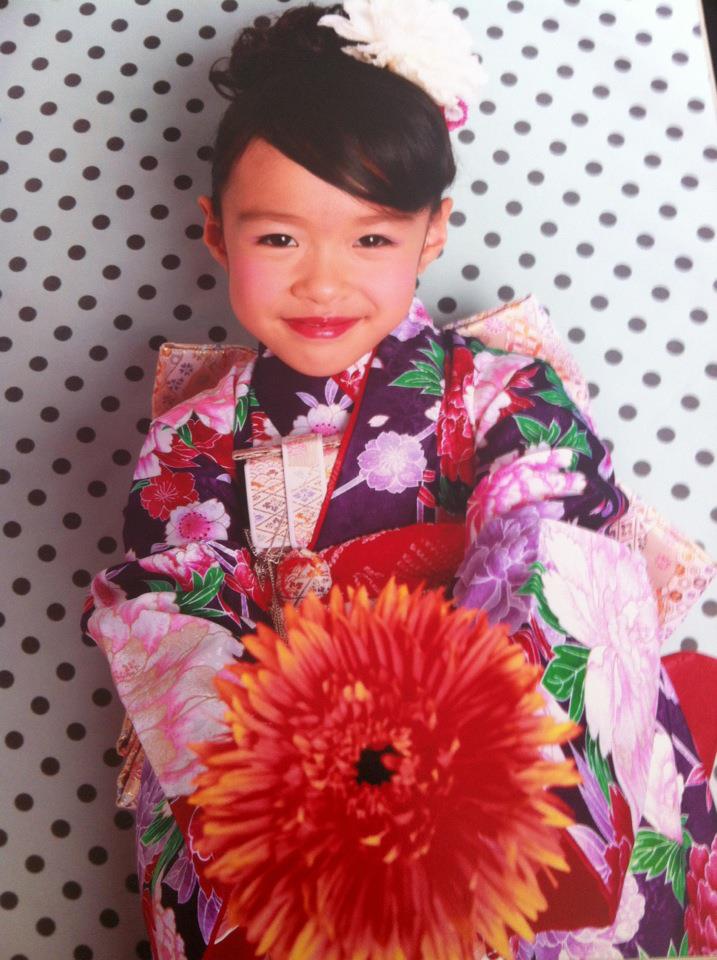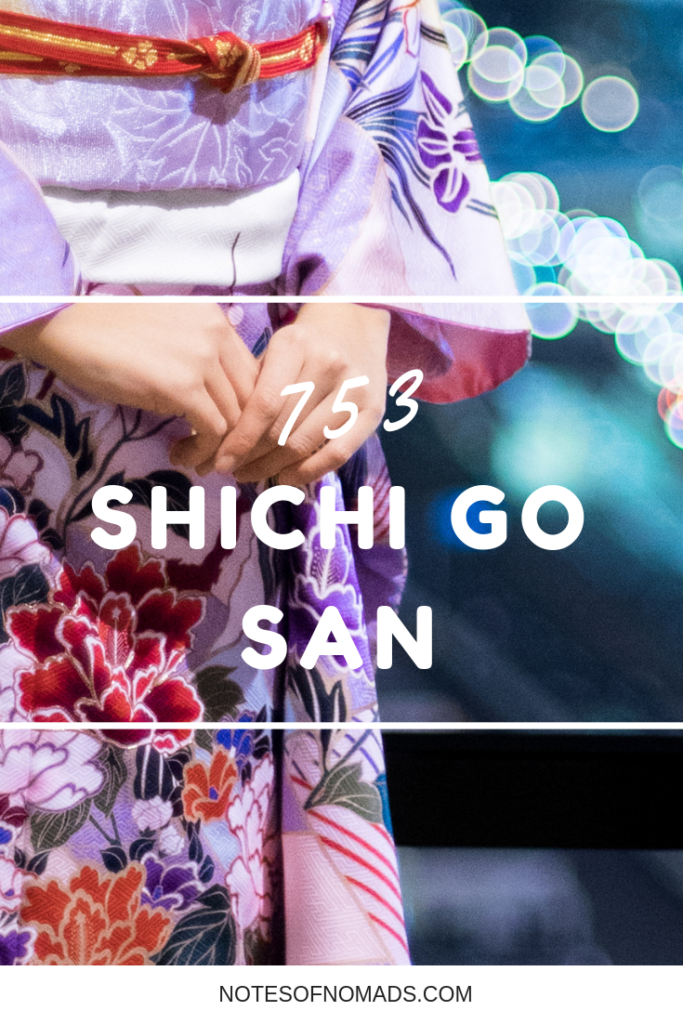Japaneses Bous Fashion for 3-5-7 Day
Shichi-go-san (七五三) is a Japanese festival held annually in Nov. Shichi-go-san literally ways '7 5 iii' and celebrates the wellness and longevity of girls aged 3 and 7, and boys anile 5.
It'south an important rite of passage for immature children and is an occasion for the whole family unit to become dressed up, become the shrine and have a repast together.
On Shichi-become-san children make their debut at the local shrine wearing traditional Japanese dress and participate in a Shinto purification ceremony to pray for a long and happy life, marking their passage into center childhood.
What'south the significance of seven-5-3?
The custom dates back to the Heian period (794-1185) when child and infant mortality was high. Information technology began amid court nobles and and then spread to the samurai class who added several rituals. Past the Meiji menses (1868-1912), Shichi-go-san had evolved to become part of mainstream culture and ritual.
The reason for celebrations to take place at the ages of 3, five and 7 were both practical and cultural. If a child reached the historic period of three or 4, it was hoped they had passed the phase of imminent danger and would survive into machismo. Some families would wait until this fourth dimension to add children to the family register for this reason.
In add-on, odd numbers are considered cheering in Japanese numerology, and at the ages of three, five and 7, children were considered to have reached special cultural milestones.
three years sometime (girls and boys)
During the samurai era, information technology was customary for children to have their heads shaved at nascence. Information technology was kept short until the age of 3. The Shichi-go-san festival marked the time when children could showtime growing their hair, referred to as kamioki (髪置き), significant to "go out the hair."
Although this custom is no longer observed, the historic period of three remains an of import milestone in Japanese culture. Traditionally, both boys and girls take their start commemoration at the historic period of 3, all the same, present it is more common for boys to expect until they turn 5.
Therefore, girls celebrate Shichi-go-san twice, at ages iii and 7, and boys usually only once at the age of v.
5 years former (boys)
And so, why exercise boys celebrate Shichi-go-san at 5 years of historic period? Well, when traditional habiliment was the daily norm in Japan, this was the age when boys could start wearing hakama or formal Japanese pants. This signified their crossing into adulthood and is called hakamagi (袴着), meaning "to wear hakama."
At five, boys from samurai families would also commencement wearinghaori (kimono jackets) with the family unit crest on information technology.
vii years old (girls)
At the historic period of vii, girls outset to wear an obi sash to tie their kimonos, rather than simple cords or strings. It's their first time to wear attire similar to a proper traditional kimono.
This is called obitoki (帯解き), significant "to effigy out the obi," and indicates their period of transition into womanhood.
Nowadays, traditional wear may be switched for Western fashion suits and dresses. It is an occasion for formal photographs and for girls to accept their hair and make-upwards done. It is an important rite of passage observed past the whole family.
When is Shichi-get-san celebrated?
While the official appointment is November 15th, every bit the day is not a national holiday in Nihon, many families celebrate information technology on the closest weekend earlier or after. All the same, yous may run into young children dressed for the occasion whatever time during November, and sometimes even earlier.
Often the timing comes downwards to scheduling – both when the family can get together and when they can get a booking for their ceremony at the local shrine.
It is generally accepted that Nov 15th was called equally the date for Shichi-go-san as it was an cheering date in the old calendar. Nevertheless, there are likewise the added theories that the 15th signifies the adding of the ages 3, five and 7, and that it coincides with the engagement that Tsunayoshi Tokugawa, a well-known Shogun during the Edo era, outset put hakama pants on his son in celebration of his growth.

My friend Yuka celebrating Shichi go san as a seven year old.
Chitose ame – special chiliad twelvemonth candy
On Shichi-go-san, children receive gifts, includingchitose ame or "one thousand yr candy." The children are given the number of sweets to friction match their age.
The stick-shaped processed, made of glutinous rice, barley and water, is ruby-red and white in color, lucky colors in Japan. They are placed in a bag decorated with turtles and cranes which, with their long life spans, are Japanese symbols of longevity.
The bags also accept auspicious wording related to wellness and a long life, such as "tsuru wa sennen, kame wa mannen" ( 鶴は千年、亀は万年), meaning a crane lives for i,000 years, a turtle lives for 10,000.
Present, mothers may too exchange presents to say thank yous for watching over the children.

Yuka with her chitose ame, "1000 year candy."
Where to run into Shichi-get-san
Popular shrines to discover the ritual in Tokyo are Meiji Jingu in Harajuku, Hie Shrine in Asakusa and Kanda Myojin Shrine in Ochanomizu.
Admission
Meiji Shrine : The JR Yamanote Line to Harajuku Sta., the Chiyoda or Fukutoshin Subway Line to Meiji-Jingumae Sta. (C 03, F 15)
Hie Shrine : The Ginza or Namboku Subway Line to Tameike-Sanno Sta. (G 06, N 06), or the Ginza or Marunouchi Subway Line to Akasakamitsuke Sta. (G 05, Yard 13), or the Chiyoda or Marunouchi Subway Line to Kokkai-Gijidomae Sta. (C 07, M xiv)
Kanda Myojin Shrine : The JR Chuo or Sobu Line, or the Marunouchi Subway Line to Ochanomizu Sta. (M 20)
Note: It is by and large considered taboo in Japan to accept photos of children without permission. Please be sure to be sensitive to this and respect parents' and individuals' concerns regarding privacy.
Pin me for afterwards

0 Response to "Japaneses Bous Fashion for 3-5-7 Day"
Post a Comment